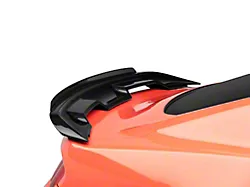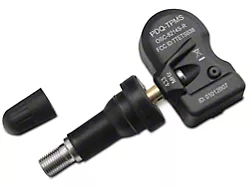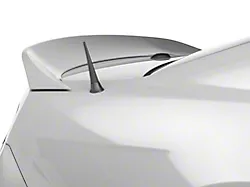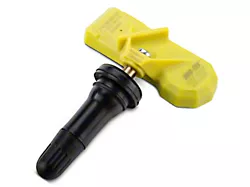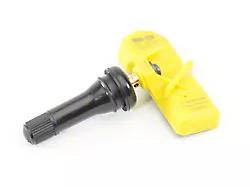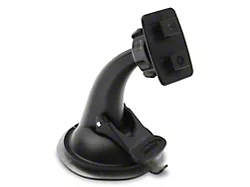
Best Sellers
How to Install C&L Cold Air Intake w/ 83mm MAF on your Mustang
Installation Time
1 hours
Tools Required
- flat blade screwdriver
- socket wrench with extension
- 8mm socket
- 10mm socket
- socket driver
- T-20 torx bit
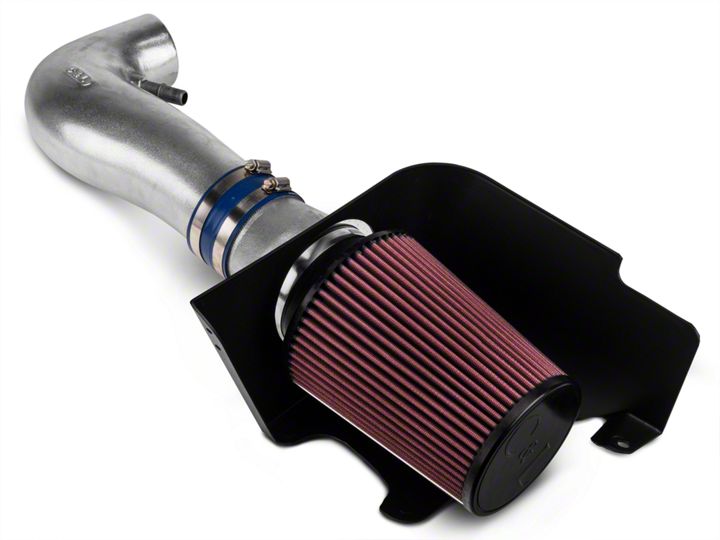
Shop Parts in this Guide
Note: Due to the nature of the 2005-up processor, a computer re-tune is necessary when installing ANY upgrade air intake assembly, even if it is just a simple filter kit. We have worked with Diablo Sport to provide a simple tuning solution for anyone who installs this system.
The C&L 7140 Predator tuner comes with dyno developed tunes programmed specifically for this system. They are accessible from the main “Performance Tunes” menu, and your computer is automatically loaded with the appropriate adjustments when selected. There are tunes available for 87, 91 and 93 octane fuels. If you choose to run standard (87) octane gasoline, then you will not be receiving the full benefit of the upgrade package. In order to help you optimize the tune on your vehicle, we have included a “tuning tips” paper with the programmer. By following the guidelines provided on this sheet, you will be able to adjust your vehicle for best performance, even if you do not have convenient access to a dyno. If your C&L kit came with a Predator Tuner and the C&L logo does not come up on the screen when you plug up the tuner, then this means that you did not receive our CL7140 tuner. In this case, you must use the “options” menu of the Predator to obtain your CAL ID and acquire a custom tune from the business you purchased the kit from or you may purchase a tune from C&L.
If you are not using a Predator to adjust the computer for this system, it is strongly recommended that you have your vehicle dyno tuned in person by a knowledgeable tuner using a wide-band air/fuel ratio monitor. A “mail order” program is not recommended, unless you have a high level of confidence about the capabilities of the tuner. If you do not re-flash the computer, the vehicle will not run properly. If you install this system prior to having the computer re-tuned, do not run the vehicle under a heavy load or at wide open throttle until the computer adjustments have been made.
The Predator performance tune programmed for our system may be altered if you make any changes that may affect the air/fuel ratio. Installing a “Cat-Back” exhaust will not require any adjustments, but the installation of an “off road” or high-flow catalytic “X” or “H” pipe, headers or a throttle body may require you to make small adjustments to the fuel at wide open throttle. The use of a dyno equipped with a wide-band air/fuel ratio monitor is helpful in making such adjustments, and you should try to maintain your wide open throttle air/fuel ratio from 12.8:1 (conservative) to 13.2:1 (aggressive) in the upper RPMs. We have put tuning recommendations on the paper supplied with the CL7140 Predator tuner to help familiarize you with the critical capabilities of the programmer. This will allow those who do not have access to a wide-band equipped dyno the ability to make changes and maintain the proper air/fuel ratio.
Tools needed for installation: a flat blade screwdriver, socket wrench with extension, 8mm socket, 10mm socket and a socket driver for the supplied T-20 torx bit.
**Important note: all Mustangs built after December 2005 use self-tapping screws to hold the MAF sensor in place. DO NOT USE THE SELF-TAPPING SCREWS IN OUR MAF HOUSING. In your bracket and bolt package supplied with this kit, we have provided new MAF sensor screws to replace the factory self-tapping screws. If you use the factory screws, you will risk damaging your new housing.
Installation of this system is relatively simple, and should be accomplished within a short period of time. There is a certain amount of room for adjustment built into the silicone hose couplers, particularly the one that connects the inlet pipe to the throttle body. A small change in how the hose clamps on to the pipe can effect filter location and filter shroud fit. When installed properly, the end of the air filter should be just in front of where the filter shroud comes down from the stock filter mounting location, and the front edge of the shroud should be level with or just slightly above the plastic cover/lid that goes over the radiator assembly.
1. To remove the stock assembly, loosen the clamp that secures the stock inlet hose to the throttle body. Next, you will notice a large nylon vacuum hose that runs from the valve cover to the right hand side of the stock inlet pipe. There is a small catch on the left hand side of the connector that is attached to this tube. Swing this tab away from the center of the tube and then pull the connector towards the driver side of the vehicle. The tab will now clear the catch that is located on the stock vacuum nipple fitting on the inlet pipe. Next, you will disconnect the MAF sensor located on the top of the air filter housing which has a wiring connector plugged into it from the behind. To disconnect, slide the red tab on the connector towards the rear of the vehicle. This will unlock the connector; slide the connector off the MAF sensor by squeezing the tab and pulling it towards the rear of the vehicle.
Go to the end of the air filter assembly, and you will see a 10mm bolt located between the driver’s side fender and the air box. Loosen and remove this bolt and set it aside for future use. At this point, the entire air inlet assembly can be completely removed from the vehicle. After removing the rubber inlet hose from the throttle body, lift straight up on the air box assembly releasing the rubber feet that isolate it from the body and the entire assembly will come out as one piece.
2. Using the supplied T-20 torx bit, remove the two screws that secure the factory air meter sensing element to the air box assembly. Carefully lift the sensor straight out of the housing, and the entire sensor cartridge will come out. Using the supplied screws, carefully lower the sensor into the new larger aluminum MAF housing provided in this kit. The sensor will only bolt up in one direction, with the “flow” arrow pointing towards the smaller end of the unit, away from the (larger) filter end. Under the stock sensor, there is a rectangular shaped rubber seal that should come out with the sensor cartridge. Make sure that it transfers to the new housing and forms a positive seal. Slide the smaller end of the new MAF housing into the silicone hose coupler that is already installed on the larger end of the inlet pipe. You should feel the end of the MAF housing make contact with the inlet pipe. At this point, the silicone hose should completely cover the small end of the MAF body. If it does not, loosen the clamp on the pipe and adjust the hose for proper fit. Rotate the MAF housing so that the sensor will be pointing towards the rear of the vehicle once the assembly has been installed on to the throttle body.
3. Slide the silicone hose on the small end of the inlet pipe completely over the throttle body and snug the hose clamp. Next, install the filter shroud by inserting it into the engine bay with the front corner of the shield going in first while holding the right hand side up. If your vehicle is equipped with ABS brakes, it may be necessary to pull the rearmost ABS lines towards the front of the vehicle so that they clear the bottom front of the filter shroud. (They should move easily, and not require any real effort.) The opening in the shield will go over the front of the MAF housing as it is lowered in place. You can now insert the factory air box bolt through the hole in the new filter shroud but do not tighten it all the way down. If the air meter housing is properly located through the opening in the filter shroud, the front edge of the filter shroud should be level with the plastic cover that goes over the radiator. Slide the supplied filter over the neck of the new MAF body. You will need to orient the clamp so that you can tighten it with a screwdriver or socket wrench. The clamp may have to be pushed through the underside of the opening in the filter shroud in order to go all the way up the neck of the filter for proper fit. With the filter installed, the end of the filter should be just barely in front of where the plastic filter shroud comes down from the factory mounting point. If it is touching the shroud, then you should loosen the front clamp at the throttle body (the one fastening the hose to the inlet pipe) and this will allow you to make adjustments to the fit of the meter through the opening in the shroud and the location of the end of the filter.
4. Tighten the bolt that secures the filter shroud and use one of the supplied zip ties to secure the front of the filter shroud to the closest ABS line (if so equipped) using the hole that is already drilled into the filter shroud. If your vehicle does not have ABS, then it is suggested that you add additional support on the front of the shield by drilling a small hole in an appropriate location on the back side of the plastic radiator shroud and then use the zip tie to secure the front of the shroud to the new hole. When properly fitted, the front top of the plastic shroud should be level with the top of the plastic radiator shroud. Re-connect the MAF wiring connector on to the sensor and slide the red tab forward to lock it into place. Pull the tab on the valve cover vent hose open, and slide the fitting over the pipe that is pressed into the inlet pipe at the throttle body end and release once a positive seal is made. Secure the hose clamps on the inlet pipe and check to make sure that everything is fastened and sealed. After a thorough check of all the fittings, hoses and connections, installation should now be complete!
